Government House is not only one of the oldest remaining colonial public buildings in Adelaide but it also the oldest Government House in Australia. The eastern Regency Wing was constructed in 1839–40.
Government House is the home and headquarters of the governor, the representative of the Queen of Australia. The governor once presided over the government of the colony of South Australia. Meetings of the Legislative Council were held in the governor’s sitting room. The granting of responsible government in 1856 reduced the role of the governor to a largely ceremonial one.
The governor is appointed by the Queen on the advice of South Australia’s premier. In practice the governor is required to act on the advice of the premier or other ministers of the Crown. The governor continues to host and participate in formal events, receptions and visits of dignitaries. Government House is the place of residence of visiting members of the British Royal family.
The first Government House
The first governor’s residence was constructed by marines from the Buffalo on a site between the present railway station and the River Torrens. ‘Government Hut’ was built of timber slabs, wattle and daub, with a thatched roof, calico ceiling and external stone chimneys. Governor Hindmarsh described it in May 1837: ‘I have but one end of my mud hut finished and all my family lay on the floor in one room while two smaller ones serve for Mrs H., myself and a female servant’. (Cited in Marsden, Stark & Sumerling, no source)
Lieutenant-Colonel George Gawler succeeded Captain John Hindmarsh in 1838. Gawler complained bitterly that only half of his family could fit into the hut; the rest being accommodated in tents. Moreover, the hut had only one fireplace and no kitchen, storeroom, servant’s room or outbuilding. Gawler wanted the structure replaced with a much higher standard of accommodation. He abandoned plans for a permanent timber house in preference for a masonry building to cost £4000, if possible.
Plans for Government House were drawn up by English architect Edward O’Brien, with amendments in the colony by George Strickland Kingston. Initial tenders were for about £7000, but this cost was reduced with further amendment. Savings were also made by using prison rather than contract labour and stone from a nearby government quarry rather than brick. Building contractors East & Breeze began work in 1839.
New Government House and additions
The two-storey Government House consisted of 12 rooms, which were occupied by May 1840. The ground floor included a drawing room, morning room and a small dining room. Three bedrooms, a dressing room and two small servant’s rooms were located upstairs. This east-facing, bow-fronted building, with its shuttered windows, is the finest example of Regency architecture in South Australia. It now forms the southeast corner of the expanded residence.
Governor Gawler was recalled to England in 1841, partly because of his ‘extravagant’ building works. Limited government finances meant that as little as possible was spent on the house. Separate kitchens and ancillary rooms were added in 1846 in an adjoining building. ‘Government Hut’ was destroyed by fire in January 1841, together with many valuable documents.
In 1854 colonial architect Edward Hamilton made plans to double the size of Government House with a two-storey addition to the southwest. The Italianate extension featured a south-facing portico and entrance hall, and incorporated a small drawing room, the Adelaide Room, ballroom and large state dining room. On the first floor three south-facing bedrooms and an additional bathroom were added. It is likely that the governor’s study and two bedrooms over the large dining room were built at this time. Builders English & Brown also erected a guardhouse, gates and flagstaff in 1855–56. Stone for the additions came from a quarry north of Government Domain.
Extensions and alterations from 1860
A series of further additions and alterations were made through the nineteenth century. In 1862–63 English & Brown built an L-shaped suite of rooms on the north of the main house. Gas lighting, including gas lit chandeliers or gasoliers, were installed in 1864. AG Chapman constructed a two-storey section for use by servants to the west of the kitchen in 1869. Other additions included a conservatory (1872), billiards room (1878), private secretary’s office, porter’s hall (now referred to as the Western Entrance) and strong room (1878). In the same year £4000 was allocated for furniture and repairs.
Modifications continued to be made in the twentieth century. The old conservatory to the west of the ballroom was converted to a smoking room, then in 1933–34 to part of the stateroom complex, before conversion to a library. In 1970 the 1855 portico was renovated. All but the Tuscan columns were demolished and rebuilt by the firm Hansen & Yuncken. In 1973 first floor rooms in the Regency Wing were rearranged and modernised to a design by architect Dean Berry to form a separate suite for Queen Elizabeth and the Duke of Edinburgh during their Royal Visit in 1974.
Portraits of King George V and Queen Mary hang in today’s entrance hall. The small and large drawing rooms are used for morning and afternoon teas, small receptions and pre- and post-dinner drinks. The large dining room houses a portrait of Queen Adelaide and King William IV. The ballroom is used for investitures, musical evenings, presentation of awards and receptions. The principal portrait in the ballroom is of a young Queen Victoria.
The Federation windows
A commemorative alcove with ten emblematic stained-glass windows was installed at the northern end of the ballroom by Governor Tennyson in 1901 to mark the visit of the Duke and Duchess of York, in Australia for the opening of the first Australian Parliament. The windows were designed and made by the Adelaide firm of EF Troy. The windows feature:
- Lord Tennyson’s coat of arms; he was governor from 1899 to 1902
- ‘T’ stands for Tennyson
- Coat of arms of the Province of South Australia
- ‘1836’ the date of the foundation of South Australia
- Royal coat of arms
- ‘E’ stands for King Edward VII; ‘A’ stands for Queen Alexandra
- Duke of York’s coat of arms
- ‘G’ stands for George, Duke of York; ‘V’ for Victoria Mary, Duchess of York
- City of Adelaide’s coat of arms
- ‘1849’, the year when the Commissioners of the City of Adelaide first met.
In 2001 Governor Sir Eric Neal and Lady Neal initiated the commissioning of a Centenary of Federation stained glass window for above the landing of the main stairwell. It was made by South Australian glass artist Ms Jan Aspinall. The new window reflects shifts in sentiment since federation. Coats of arms have been replaced by images relating to the South Australian countryside, culture and economy. The arts are depicted in images of the Festival Centre, musical notes and a Hans Heysen painting of sheep grazing. A map of metropolitan Adelaide is portrayed along with a scene of Glenelg and a map of the Barossa Valley. Key industries are represented: agriculture, mining, aquaculture, viticulture and wine. In the left lower corner an Aboriginal elder is depicted exchanging desert sand with a white person to symbolise changes reflected in Aboriginal lands rights legislation. Memorials for the Boer War and the two world wars are shown. The vertical ‘posts’ show an intertwining of eucalyptus leaves with exotic foliage, including grape vines and an Adelaide rose.
The grounds
George Francis, director of the Adelaide Botanic Garden, supervised the first plantings in the grounds in 1855. However, these were not substantial. More than a decade later the building surrounds were still largely untouched bushland, mainly eucalypts. By 1878 the grounds had been laid out and eucalypts largely removed. The two palms (Washingtonia filifera) on either side of the porch were planted in the 1890s.
In 1975 the Botanic Garden assumed control of the grounds. At that time the northern portion was totally unkempt. Lawns now cover most of this area. Extensive remodelling of the garden in 1989, involved more garden beds, tree removal and an increased range of sympathetic plantings. A small kitchen garden remains. The total grounds area is 5.6ha.
Several cottages were built in the northern portion, originally for the butler (1928) and the chauffeur (1945). The private secretary’s ‘Peppertree Cottage’ was built to the design of John Overall, the South Australian Housing Trust’s chief architect.
Boundary walls and gatehouse
Sections of the original stone wall that encircled Government Domain can still be seen on the northern and western boundaries. The wall was erected by John Williams and Robert Palmer in 1849–50 using random stone obtained from the government quarry nearby.
In 1874 the guardhouse and gates were removed and rebuilt when City Bridge (now King William) Road was widened. The contractor AG Chapman used old stone from the previous structure and Dry Creek stone. The new guardhouse included an elegant loggia: a covered open-sided walkway, with arches along one side. The building was stuccoed and rendered, with a roof of Willunga slate.
Another road widening scheme in the 1920s cut 6m off the Government Domain along the western boundary and the corner of its intersection with North Terrace. The loggia section of the gatehouse was demolished and the gates re-erected. The old stone wall on the western boundary was demolished in 1926 and replaced by a timber fence, which in turn was changed to a tubular steel fence in 1988. The wall along Kintore Avenue and part of the northern boundary was rebuilt in brick by RJ Nurse in 1937. The masonry wall along North Terrace was rebuilt in 1987 ‘on the same alignment and same specifications as those of 1845 and 1862’ (wall plaque) and the South Australian Gas Co. reinstalled gas lighting which was replaced by solar lighting in the twenty-first century.
On 13 October 1927 the Government House Domain Dedication Act was passed to safeguard the area from unsympathetic development.
Summer residences
Successive governors used a summer residence in the Adelaide Hills to escape from the heat of the Adelaide Plains. The first, Old Government House, was built in 1860 in the present Belair National Park. This was superseded by a larger residence at Marble Hill near Norton Summit in 1880. After this was destroyed in the Black Sunday Bushfires of 1955 the governor was no longer provided with a summer residence.


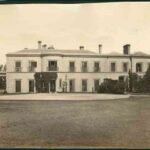

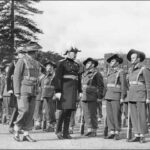
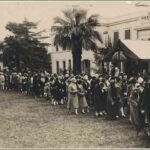
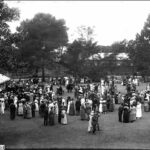
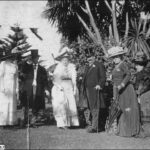
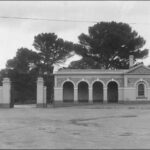
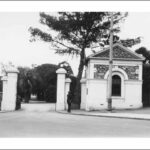
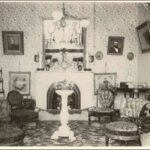
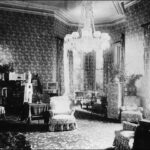

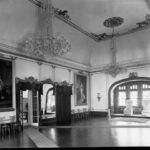
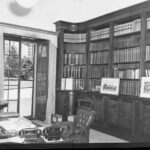
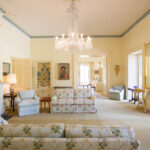
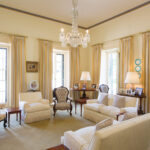
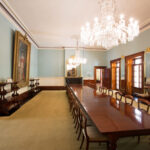
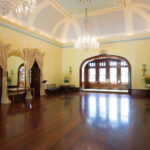
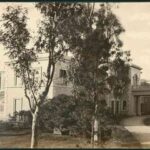
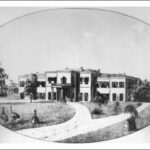
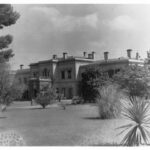
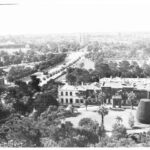
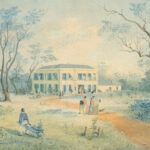

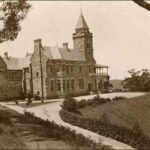
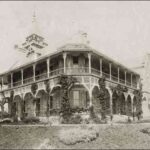
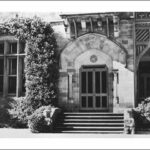
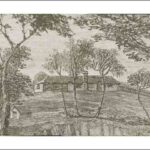

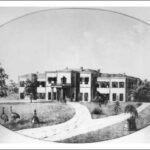

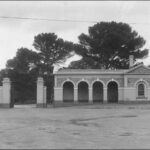

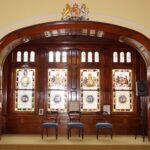
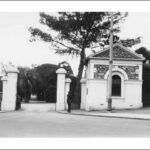
Comments
5 responses to “Government House”
The botanic garden was asked to take over care of the grounds by Sir Mark Oliphant during the Lothian era. I was responsible for the remodelling and replanting of the grounds in 1989 as a result of the tennis court demolition and removal of diseased trees. Seedlings of the dragon’s blood tree in the Grounds were used to make the roadside border planting facing the Festival Centre at that time.
Thanks for adding that information Brian. It must have been an interesting job!
trying to find the history of the wildongaleechie (wild dog) pub in Hallett s.a.
Hi Graham,
We don’t seem to have anything on file here. Perhaps try the Hallett Historical Society – http://explorehistory.com.au/organisation/hallett-historical-society
Elsie Harrison, my grandmother, worked in the staff of Governor Galway. I wonder if there is a photo or something for me to show my grandkids? That would be 5 generations!!!